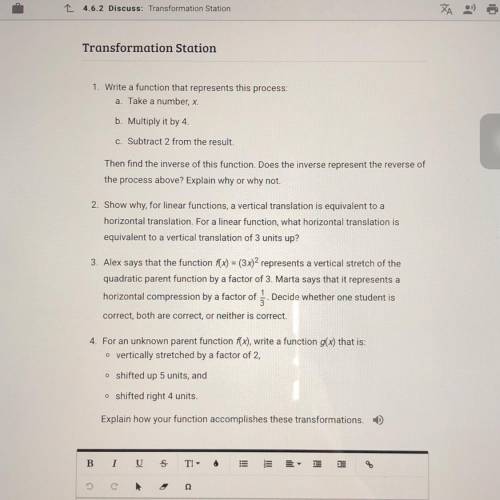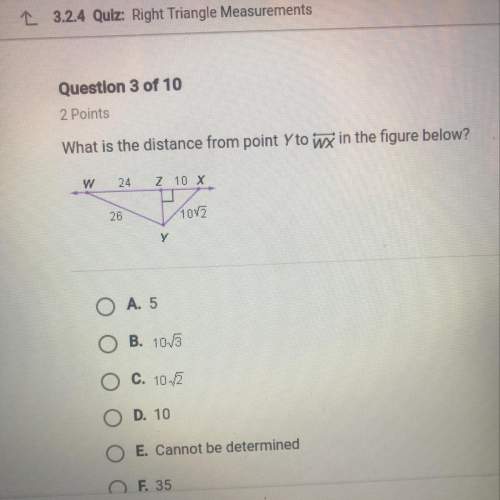Transformation Station
1. Write a function that represents this process:
a. Take a number, X...

Mathematics, 28.04.2021 01:00 Itssata
Transformation Station
1. Write a function that represents this process:
a. Take a number, X.
b. Multiply it by 4.
c. Subtract 2 from the result.
Then find the inverse of this function. Does the inverse represent the reverse of
the process above? Explain why or why not.
2. Show why, for linear functions, a vertical translation is equivalent to a
horizontal translation. For a linear function, what horizontal translation is
equivalent to a vertical translation of 3 units up?
3. Alex says that the function f(x) = (3x)2 represents a vertical stretch of the
quadratic parent function by a factor of 3. Marta says that it represents a
horizontal compression by a factor of ſ. Decide whether one student is
correct, both are correct, or neither is correct.
4. For an unknown parent function f(x), write a function g(x) that is:
o vertically stretched by a factor of 2,
o shifted up 5 units, and
o shifted right 4 units.
Explain how your function accomplishes these transformations.


Answers: 1
Another question on Mathematics


Mathematics, 21.06.2019 20:30
Answer asap evaluate 4-0.25g+0.5h4−0.25g+0.5h when g=10g=10 and h=5h=5.
Answers: 3


Mathematics, 21.06.2019 21:40
Write the contrapositive of the conditional statement. determine whether the contrapositive is true or false. if it is false, find a counterexample. a converse statement is formed by exchanging the hypothesis and conclusion of the conditional. a) a non-converse statement is not formed by exchanging the hypothesis and conclusion of the conditional. true b) a statement not formed by exchanging the hypothesis and conclusion of the conditional is a converse statement. false; an inverse statement is not formed by exchanging the hypothesis and conclusion of the conditional. c) a non-converse statement is formed by exchanging the hypothesis and conclusion of the conditional. false; an inverse statement is formed by negating both the hypothesis and conclusion of the conditional. d) a statement not formed by exchanging the hypothesis and conclusion of the conditional is not a converse statement. true
Answers: 1
You know the right answer?
Questions


Chemistry, 01.07.2020 15:01


Physics, 01.07.2020 15:01


Mathematics, 01.07.2020 15:01






Physics, 01.07.2020 15:01











